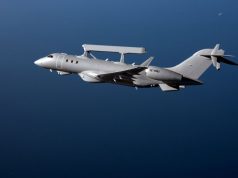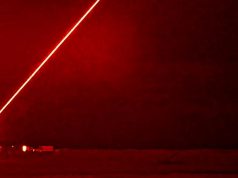The second demonstration of unmanned systems as part of the EU-funded OCEAN2020 defense research project has kicked off in the Baltic Sea under the leadership of the Swedish Navy.
While the first iteration from 2019 took place in the Mediterranean Sea and was led by Leonardo as the industry prime, the live demonstration off the southern coast of Sweden is led by Saab.
A total of 17 European companies, research institutes and defense ministries are part of the demo, which will demonstrate the capabilities of 13 different unmanned vehicles, four of them from Saab, and the communication and control processes that enable cooperation amongst them.
With the support of the Swedish Armed Forces, Saab is leading the delivery of the demonstration, with two scenarios that have a clear military focus.
The purpose of the first scenario is to prove that the vehicles can detect and collect target information, create a recognized maritime picture and later engage an enemy threat. Acting as a threat to a coastal area of vital military importance are two high-speed boats, along with motherships for unmanned systems. In the second scenario, the various vessels and systems are working together to counter underwater threats from some dummy sea mines and a Saab AUV62-AT underwater vehicle representing a submarine.
Saab is participating with two unmanned surface vessels, the Patrol Craft CB 90 (Enforcer III) and the surveillance craft Piraya, which are demonstrating their autonomous operation and collaboration capabilities.
Below the waves, Saab’s Deep Vision Side Scan Sonar locates any hidden threats while the Sea Wasp remotely operated vehicle operates in the depths to neutralize dummy sea mines. On-shore, Saab’s Giraffe AMB radar is searching for and tracking the targets while the 9LV Combat Management System provides a comprehensive situational overview. Saab’s Secure Service Oriented Architecture connects and distributes the information in an efficient way between all the systems.
Building on the successful first OCEAN2020 demonstration, which took place in 2019 in the Gulf of Taranto, Italy, Leonardo’s participation in the second exercise will involve a number of technologies including its remotely piloted SW-4 SOLO helicopter equipped with an Osprey 30 active electronically scanned array (AESA) surveillance radar. The same radar will also be on-board Safran’s Patroller drone during the exercise. Osprey is a multi-domain radar that can support a wide variety of missions, providing a high performance E-scan surveillance capability for fixed wing, rotary wing and unmanned platforms.
Elsewhere, the Lithuanian Navy’s P11 Žemaitis patrol ship will be equipped with Leonardo’s Combat Management System (CMS), enabling interoperability with the SW-4 SOLO by integrating and coordinating the information coming from the drone with the ship’s on-board sensors and systems in real time. This advanced technology provides operators with a full situational awareness picture and the ability to react quickly to developments. Finally, Leonardo will provide earth observation services via the SEonSE (Smart Eyes on the SEas) platform from joint venture e-GEOS (Asi 20% – Telespazio 80%), drawing on the capabilities of the Cosmo-SkyMed satellite.
“By participating in this demonstration, Saab proves it has a unique capability to connect assets in the air, on the water and under the surface. This is a market segment with a lot of competition, but few have the wide competence as Saab does when it comes to the sensors, communication and management systems that can integrate so many complex systems in a flexible manner,” said Ingrid Leijonhufvud, Saab’s OCEAN2020 project manager.
OCEAN2020 is a consortium funded by the European Union’s Preparatory Action on Defence Research and implemented by the European Defence Agency. This work contributes to the EU’s ability to lead innovation in support of Europe’s strategic autonomy in the maritime domain.
The consortium, led by Leonardo S.p.A and with Saab’s co-leadership for the second live demonstration, is made up of 43 participants from 15 countries, giving it a large European dimension.



























